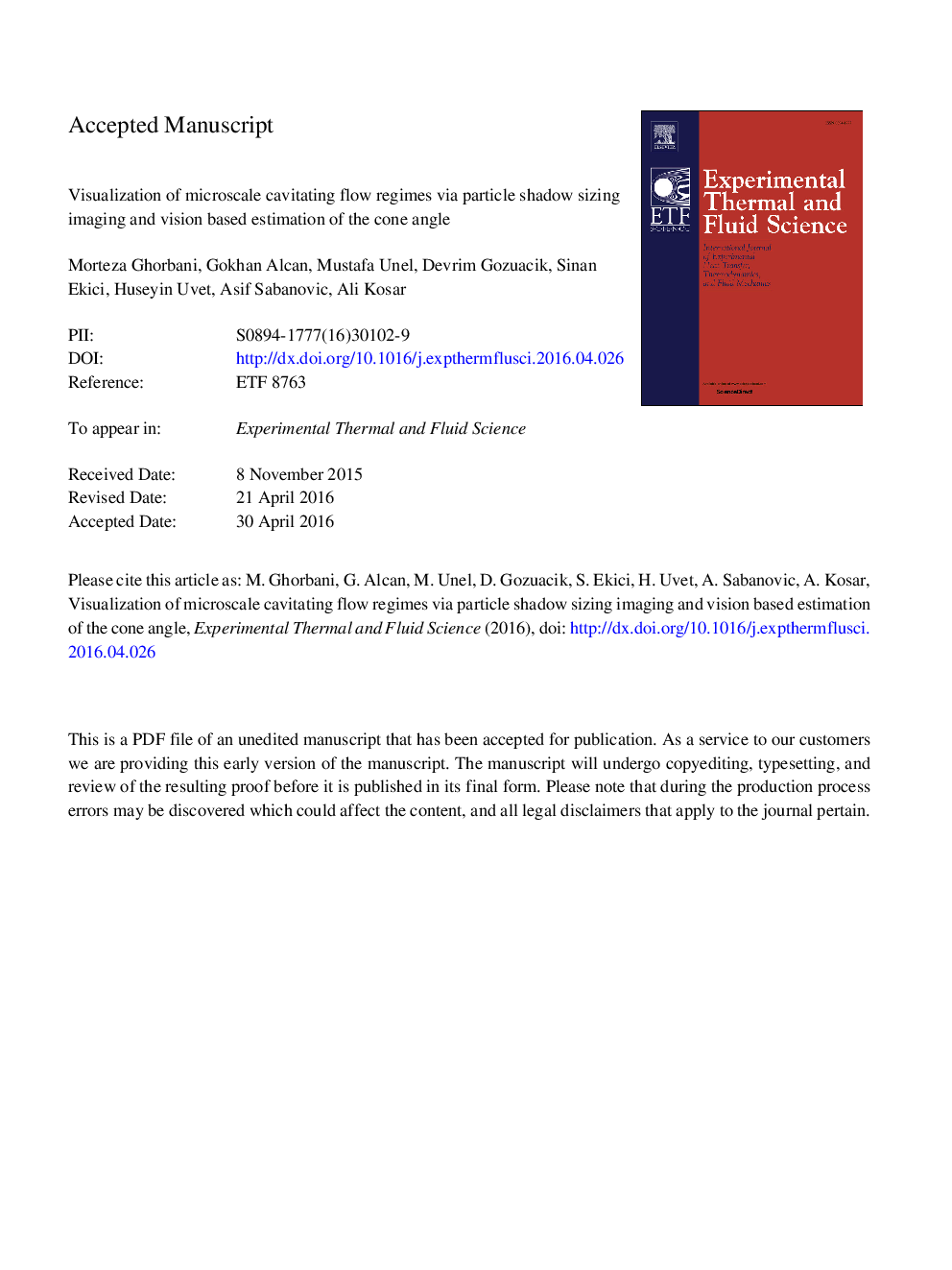| Article ID | Journal | Published Year | Pages | File Type |
|---|---|---|---|---|
| 651019 | Experimental Thermal and Fluid Science | 2016 | 36 Pages |
Abstract
Recent studies show the destructive effect of the energy released from the collapse of cavitation bubbles, which are generated in micro domains, on the targeted surfaces. The cavitation phenomenon occurs at low local pressures within flow restrictive elements and strongly affects fluid flow regimes inside microchannels which results in spray formation. Extended cavitation bubbles toward the outlet of the microchannel, droplet evolution, and spray breakup are among crucial mechanisms to be considered in spray structure. In this study, various spray structures under the effect of hydrodynamic cavitation were recorded using a high speed visualization system. Acquired images were analyzed and characterized using several image processing algorithms. In this regard, the fluid flow with ascending upstream pressures from 10 to 120Â bar were passed through a microchannel with an inner diameter of 0.152Â mm. The spray at the outlet of the microchannel was analyzed for these pressures in four different segments. Particle Shadow Sizing (PSS) imaging and several image processing techniques such as contrast stretching, thresholding and morphological operations were employed to identify the flow regimes in the separated segments. In addition, a vision based estimation technique that utilizes a Kalman filter was developed to estimate cone angle of the spray. Furthermore, classification of fluid flow regimes and morphological characteristics of the spray structure were outlined based on the cavitation number.
Related Topics
Physical Sciences and Engineering
Chemical Engineering
Fluid Flow and Transfer Processes
Authors
Morteza Ghorbani, Gokhan Alcan, Mustafa Unel, Devrim Gozuacik, Sinan Ekici, Huseyin Uvet, Asif Sabanovic, Ali Kosar,
